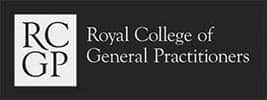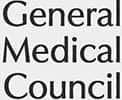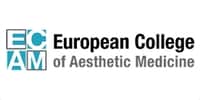The venesection was painless to say the least, thank you for using local anaesthetics; highly recommended
Rhinoplasty, also known as a nose job, is one of the most popular cosmetic surgery procedures and can give you the confidence to live your best life. Non-surgical rhinoplasty, or a liquid nose job, is a minimally invasive procedure that uses hyaluronic acid-based dermal fillers to reshape the nose, offering immediate results without surgery or downtime.
If you have always wanted to alter your nose shape and are looking for a lower-risk option, non-surgical or liquid rhinoplasty might be the solution. With a non-surgical nose job, you can have the nose of your dreams without the risk of going under the knife. This is an excellent alternative to traditional rhinoplasty surgery, using nose filler to change the shape of your nose.
We use FDA-approved hyaluronic acid filler for liquid rhinoplasty, which is found naturally in the body and serves as an essential structural function for the skin. If you’ve been considering a nose job, discover more about the exciting, non-surgical nose job.
You’re not alone if you feel self-conscious about the shape of your nose. However, advancements in aesthetics mean we can use nose filler to create a straighter nose, lift the nasal tip, or build up a smaller nose. Both men and women come to us for the best non-surgical nose job in London.
Ideal candidates for non-surgical nose reshaping are those with a depression or bump on the nasal bridge or curved or hook-shaped noses. It’s also suitable for anyone wanting to address slight asymmetry or refine the tip of the nose.
Read on for real-life examples of non-surgical nose jobs we’ve achieved at our London clinic, including before and after photos of amazing results.
Before attending your liquid rhinoplasty appointment at our London clinic, you must:
The non-surgical rhinoplasty procedure begins with cleansing and disinfecting the skin to ensure a sterile treatment area. A topical numbing cream is then applied, taking approximately 5–10 minutes to take effect for maximum comfort. All dermal fillers used contain an integrated local anaesthetic to further minimise discomfort during and after the procedure.
The treatment typically takes around 15 minutes, during which precise injections are administered to reshape and enhance the nose. An ice pack or arnica may be applied post-procedure to reduce the risk of bruising. Results are visible almost immediately, with little to no downtime, allowing patients to resume their daily activities straight away.
When you come to our London clinic for your non-surgical nose job, you can expect to be there for 30-45 minutes. This makes this procedure popular; some people even get it on their lunch break and return straight to work.
These photos demonstrate the results we can achieve when you book non-surgical nose reshaping in our London cosmetic clinic. Our experts can implement subtle changes to alter the appearance of your nose’s size and shape.
The photos below show how we used nose filler to lift the nasal tip of one patient and fill her nasal depression for a straighter nose with a non-surgical nose job. The result is a balanced side profile and a patient who is very happy with the appearance of her nose. We love seeing the new sense of self-assurance a non-surgical nose job can give our patients!
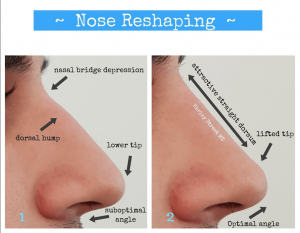
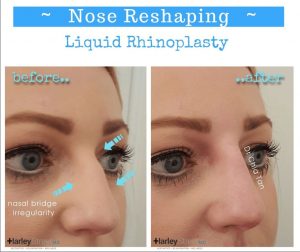
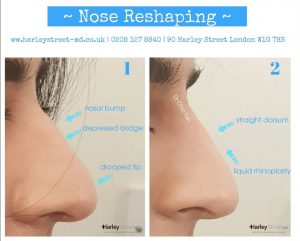
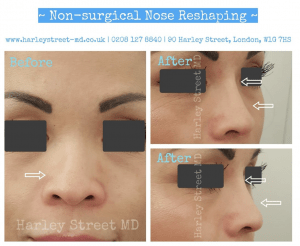
This video shows what you can expect when coming for a non-surgical nose job in our London clinic.
After your non-surgical rhinoplasty, you can resume most daily activities immediately, but it is important to follow specific aftercare guidelines to ensure the best results. Avoid touching or applying any products to your nose for at least four hours after treatment. For the first two days, refrain from using skincare products containing peeling agents such as glycolic acid, as well as strenuous exercise and alcohol consumption. Swelling and bruising are typically minimal with hyaluronic acid fillers. To further protect your results, it is advisable to avoid sun exposure, tanning, saunas, and extreme heat for up to two weeks.
Additionally, to maintain the shape and longevity of your results, you should avoid wearing glasses for two weeks, as pressure on the nose may affect the filler’s placement. The outcome of your treatment is visible immediately, but a complimentary check-up is recommended after two weeks to review your progress and discuss any additional treatments that may enhance your new look. You may also book your next appointment to ensure your results are well maintained over time.
Unlike traditional rhinoplasty, liquid rhinoplasty eliminates the risks of general anaesthetic and is widely considered a safer option. In addition to only requiring a local anaesthetic, nose filler does not weaken the nose. And (in our opinion), most importantly, there is no risk of your nose collapsing or being so damaged it will never look normal again.
Hyaluronic acid fillers are extremely safe, which is why we use them for nose fillers at Harley Street MD. They can also be completely dissolved if, for any reason, you are not happy with the results of your nose filler.
We use a topical numbing cream to help reduce any pain the needle might cause, and our patients tell us they feel very little discomfort. A local anaesthetic is integrated within the dermal filler to further minimise any pain that the procedure might cause. There is also virtually no swelling or bruising, which is often the most painful element of a surgical nose job, and no bleeding into the nostrils.
A non-surgical nose job uses dermal fillers, so the duration of the effect varies between individuals depending on age, general health, the type of filler, and the client’s lifestyle. Nose reshaping with HA filler can last between 12 and 18 months. After this, you just come into the office for a top-up session. Another type of filler that can be used is Bellafill®, a synthetic filler. Due to the higher associated risks and complications of Bellafill, we do not use this filler.
Swelling and bruising are minimal after nose filler with hyaluronic acid.
Swelling and bruising will typically disappear within less than 48 hours.
We advise you to avoid wearing glasses for two weeks.
The risk of HA moving from the injection site is very low.
Nose filler at Harley Medical MD in London starts at £350.
PROCEDURE TIME 30-45 minutes
BACK TO WORK Same day
ANAESTHETIC Topical
FULL RECOVERY 1-2 days
DURATION OF RESULT 9-18 months
RESULTS Immediate
The venesection was painless to say the least, thank you for using local anaesthetics; highly recommended
‘I blast and cruise for years. When my haematocrit level went up, my GP did not seem to care and I couldn’t possibly wait for weeks to see a specialist. I am so lucky that to have found Harley Street MD through my research and it is the only clinic I have found that accept self-referral for therapeutic venesection due to AAS use.
I was recommended by my gym mate, I can’t thank you enough for sorting out my prolactin issue due to steroid use. You are a godsend.

Your skin needs extra TLC in winter. However, keeping it hydrated during the summer is also essential. The additional sun, humidity, and sweating can make you susceptible to issues like…
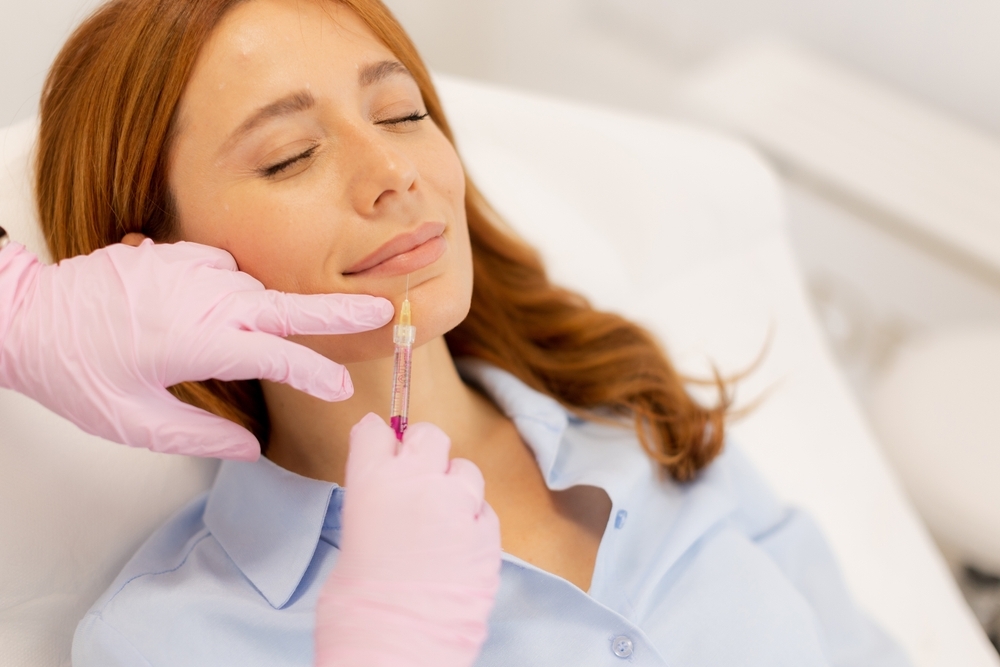
Lip enhancement is a fantastic way to improve the overall appearance of your lips and your face, whether you want a Kylie Jenner look or to fill them out for…

While testosterone therapy has become increasingly commonplace for men, there is less discussion around testosterone treatment specifically for women. We look at what is considered a healthy level of testosterone…

The shape of your nose can significantly impact not just how you look but also your self-confidence. As much as friends and family may assure you they can’t see the…
